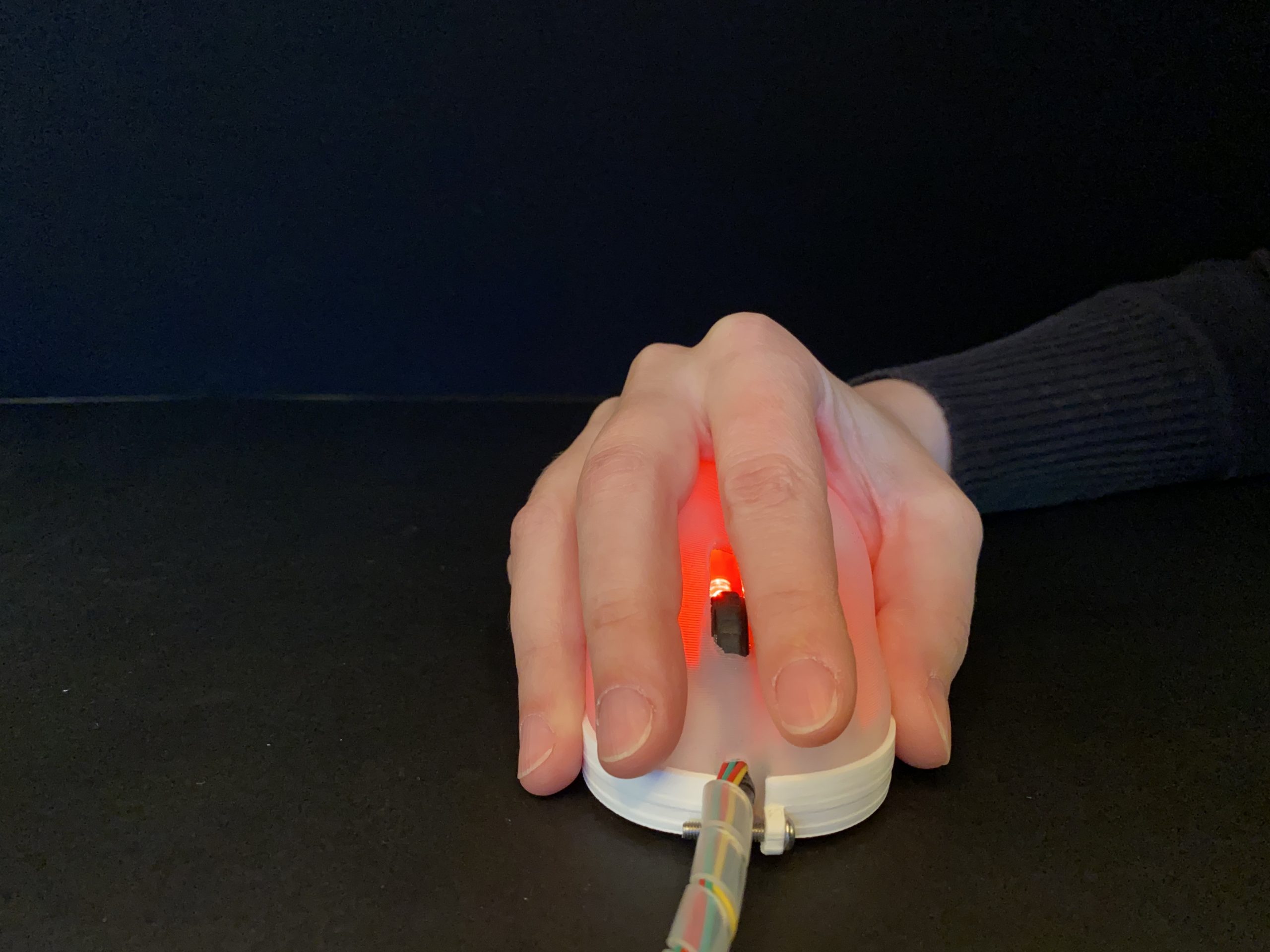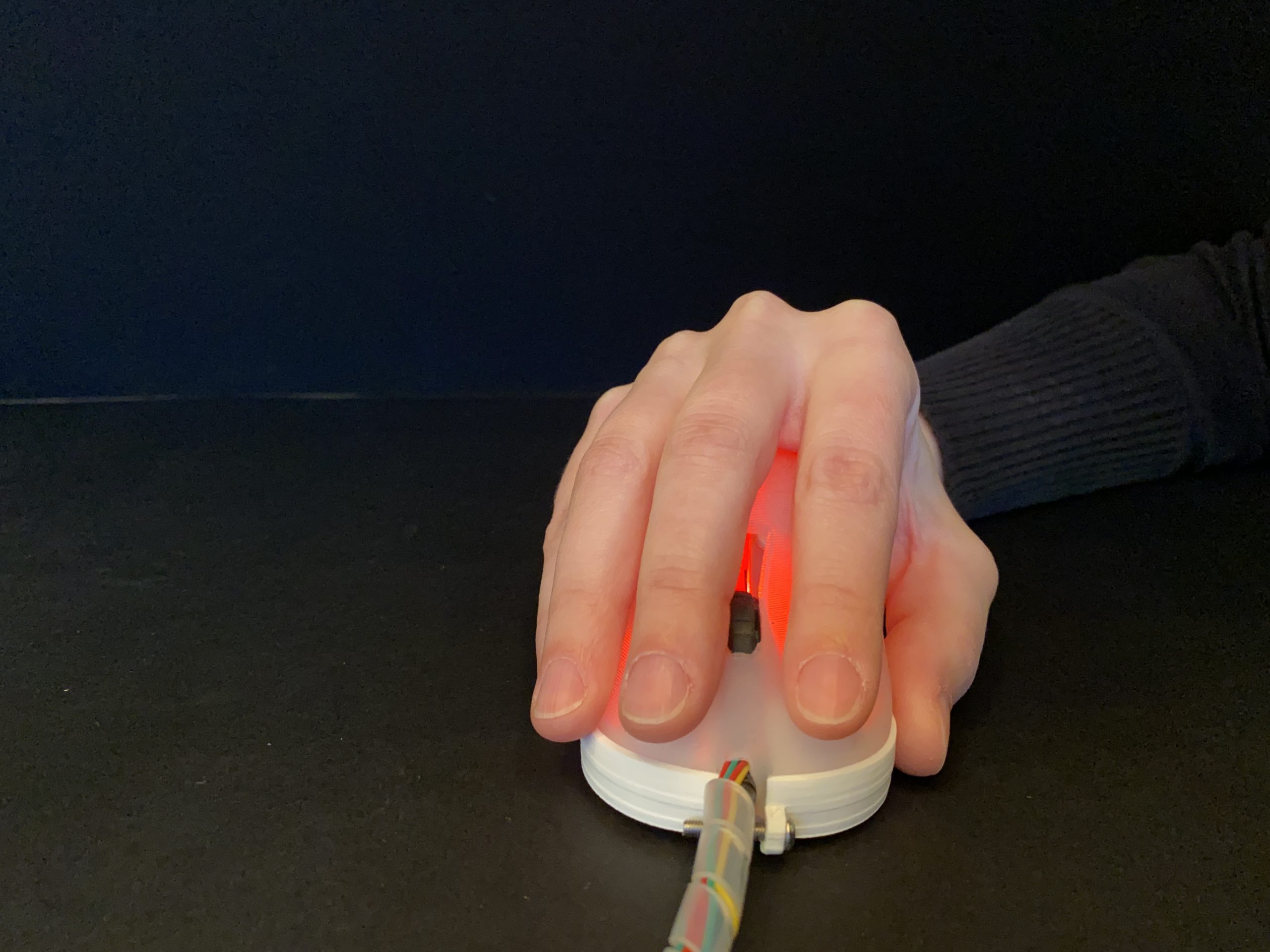Bachelor project 2: Mouscle
Coach: Mark Thielen
Student group: Emma Eisma, Max de Jongh, Katrien van Riet
About the project
Mouscle is a computer mouse that slowly changes shape to prevent RSI symptoms.
This project sparked my interest in shape-changing interfaces, and soft robotics in general. I found it interesting that soft devices weren’t being developed more in our design department, and from this project onwards, I implemented shape change (compliant mechanisms, soft actuators, etc.) into many of my projects. I also discovered the field of design for medical applications through this project, which came back in my M1.2 project (fetal manikin).
Mouscle won the Prototyping Award in the 2021 TU/e Contest. This project was awarded a voucher by the CE3 Project which enabled us to further develop the design, which was ultimately sold to another party. Mouscle also won the wildcard category to present at the 4TU contest in Helsinki.
With the help of the TU/e, we also obtained a Dutch patent for Mouscle (NL2028201B1).

Main takeaways
- When we won the TU/e Contest, it was the first time I realised that what we design can make an impact in the real world. Because of this project, I learnt that solid technology and realisation skills, together with good research and validation studies with users, can make a project successful.
- The road towards obtaining a patent involved many meetings with The Gate (the start-up platform of the TU/e) and a start-up interested in buying the patent. I learnt how to communicate the innovativeness of our idea and how to sell our idea to a potential buyer.
- At this stage in the bachelor’s, our prototyping skills were almost good enough to build a fully functioning mouse. The only thing we didn’t get to work was the mouse to change shape when a hand was resting on it. The stepper motors we were using weren’t strong enough. (In hindsight we should have used small servo motors.) I found it really disappointing that we never got the mouse to work at such a level that we could do actual user testing with it. I think this drove me to focus on fully experiential prototypes after this project.

Additional visuals

